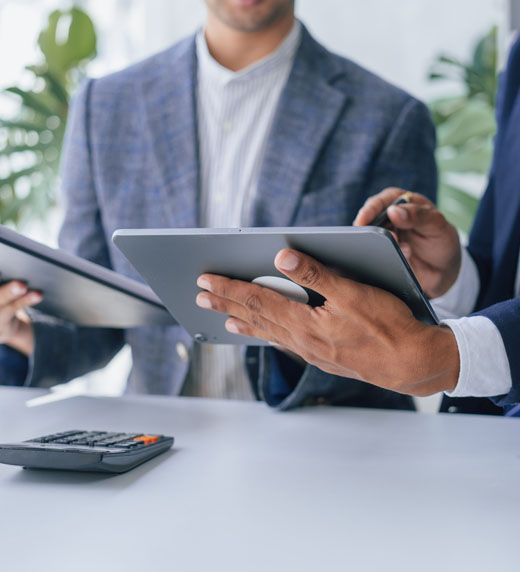What is SVOG?
The Economic Aid to Hard-Hit Small Businesses, Nonprofits, and Venues Act (December 27, 2020) provided much-needed relief for performing arts, museums and other live venues that have been shut down due to COVID-19 restrictions. The legislation offered these organizations a choice between the SVOG program or a PPP loan (first or second draw loans post December 27, 2020).
The original legislation provided organizations a choice between the two programs, but a timing difference between a program that ends March 31, 2021, (PPP) or a program with an unknown start date. This false choice caused significant anxiety for otherwise eligible SVOG organizations that feared the SVOG program could run out of funds before their priority tranche was eligible to apply, which could have resulted in an organization receiving neither type of funds if the March 31 PPP deadline passed.
However, the American Rescue Plan Act includes an amendment that allows organizations to apply for and receive both a PPP second loan and SVOG funds. This allowed organizations to apply for PPP2 before March 31 (there is also a push to extend the PPP application date by at least 60 days).
The amount of PPP loan received will reduce the amount of SVOG received, but this is a commonsense approach to solve the challenge of allowing performing arts, museums and other live venues to ensure that they receive the maximum amount of support that Congress intended. The legislation also includes an additional $1.25 billion in SVOG funding.
What is the Eligibility Requirements?
An eligible person or entity is a live venue operator or promoter, theatrical producer, live performing arts organization operator, relevant museum operator, motion picture theatre, or talent representative that meets the following requirements:
- Was fully operational as a live venue on 2/29/2020.
- Has gross earned revenue during any quarter in 2020 that demonstrates not less than 25% reduction from gross earned revenue of the live venue, etc. from the same quarter 2019.
- Must receive at least 70% of earned revenue from a cover charge ticketing/entrance fee or make tickets available for purchase by the public an average of not less than 60 days before the date of the event and pay performers in an amount that is based on a percentage of sales, guarantee, or another mutually beneficial form of agreement.
- Must have certain characteristics of live performance venues, movies theatres, or museums detailed in the legislation.
- As of the date of the grant, the organization/individual must resume (or intend to resume) organizing, promoting, producing, managing, or hosting future live events. A motion picture theatre must be open or intend to reopen for the primary purpose of public viewing of motion pictures. A museum must be open or intend to reopen. A talent representative must be representing or managing artists and entertainers.
- Cannot receive a Paycheck Protection Program (PPP) loan after December 27, 2020 (organizations that received a PPP loan prior to that date are not excluded from eligibility).
- Must certify that the current economic circumstances make the grant necessary for ongoing operations, which is language consistent with the PPP certification language.
- Excludes entities that are majority owned or controlled by a publicly traded company or received more than 10% of gross revenue from federal funding in 2019 (excluding amounts received by the venue, etc. under the Robert T. Stafford Disaster Relief and Emergency Assistance Act).
- Excludes entities of the state or political subdivision other than the live venue operator, promoter, theatrical producer, live performing arts organization operator, relevant museum operator, motion picture theatre operator, or talent representative.
- Excludes for-profit museums.
- Excludes large operators, which is an entity owned or controlled by an entity with two or more of the following characteristics: 1) owns or operates venues, etc. in more than one country, 2) owns or operates venues, etc. in more than 10 states, or 3) employs more than 500 FTEs as of February 29, 2020 (FTE is defined as 30 hours/week and 0.5 FTE is 10-30 hours/week).
- Excludes organizations that present live performances of a prurient sexual nature or derive more than de minimis gross revenue through sale of products or services, or presentation of any depictions or displays of a prurient sexual nature.
- The Small Business Administration (SBA) is required to submit a report to the Senate and House Small Business Committees 45 days after enactment detailing their oversight and audit plan for the program and provide monthly updates.
What are the Amounts and Timeline?
The grants will be awarded in the following phases (initial and supplemental grants):
Initial Grants - First Priority
- Awarded during the initial 14-day period of the program.
- Recipients must have a revenue decrease due to COVID-19 between April 1, 2020, and December 31, 2020, of at least 90% from the same period in 2019.
- Revenue is calculated based on accrual method, but the SBA may use an alternative method if there is a seasonal impact of excluding January through March from the calculation.
- The amount of the grant is the lesser of 45% of gross earned revenue during 2019 or $10 million (modified calculation if not in operation prior to January 1, 2019).
- Not more than five affiliates may receive initial grants.
Initial Grants - Second Priority
- Awarded during the second 14-day period of the program.
- Recipients must have a revenue decrease due to COVID-19 between April 1, 2020, and December 31, 2020, of at least 70% from the same period in 2019.
- Revenue is calculated based on accrual method, but the SBA may use an alternative method if there is a seasonal impact of excluding January through March from the calculation.
- The amount is of the grant is the lesser of 45% of gross earned revenue during 2019 or $10 million (modified calculation if not in operation prior to January 1, 2019).
- Not more than five affiliates may receive initial grants.
Supplemental Grants
- Awarded after the 28-day initial grant period of the program.
- There is a set-aside (at least $2 billion) for small businesses with not more than 50 FTEs.
- Organizations that didn’t receive an initial grant are eligible if earned revenues are reduced by at least 25%.
- Initial grant recipients can receive 50% of their initial grant amount (eligible if at least 70% earned revenue decrease from the most recent quarter as of April 1, 2021 compared with the same period in 2019).
- Total grants (initial and supplemental) cannot exceed $10 million.
What Can the Funds be Used For?
Funds are to be used for costs incurred during 3/1/2020 to 12/31/2021, but there may be an extension for supplemental grant spending. Allowable expenses include: payroll costs, covered rent obligations, covered utility payments, scheduled payments of interest or principal on any covered mortgage obligation, scheduled payments of interest or principal on any indebtedness or debt instrument incurred in the ordinary course of business that is a liability of the eligible person or entity and was incurred prior to 2/15/20, covered worker protection expenditures, payments made to independent contractors not to exceed $100K for any individual employee of an independent contractor, and other ordinary and necessary business expenses Prohibited expenses include: purchase of real estate, principal or interest on loans originated after 2/15/2020, investment or re-lending of the funds, and contributions or expenditures to or on behalf of any political party, committee, or candidate for elective office.
Recommendations
Performing arts, museums and live venues have the option of the following to provide the maximum amount of financial support:
- Review the Shuttered Venues Eligibility Requirements Matrix (added 3/5/2021).
- Complete the preliminary application checklist (added 3/5/2021). This checklist is extensive, so allow for some time to prepare.
- Prepare to apply for PPP2 (first or second draw, depending on eligibility) if there is a concern as to timing and availability of SVOG funds.
- Consider cost and compliance requirements of PPP2 and whether you would receive full forgiveness.
- For first or second priority SVOG applicants, consider whether it is necessary.
- For second draw loans, returning to your original lender may be the easiest and most efficient way to apply since they currently have all of your information from your first draw loan.
- Many banks are closing applications well ahead of the 3/31 deadline, so you may need to move quickly.



